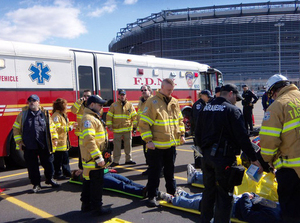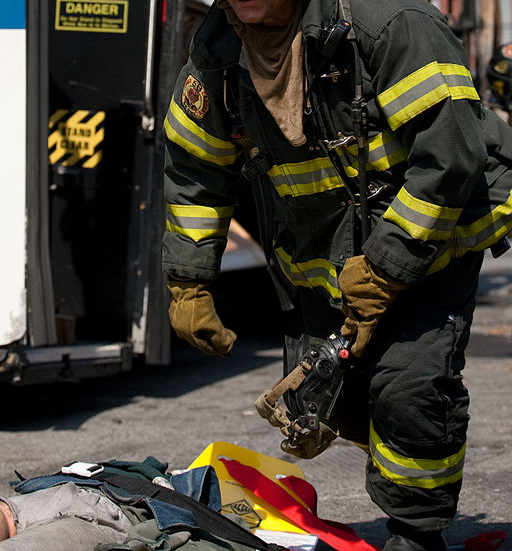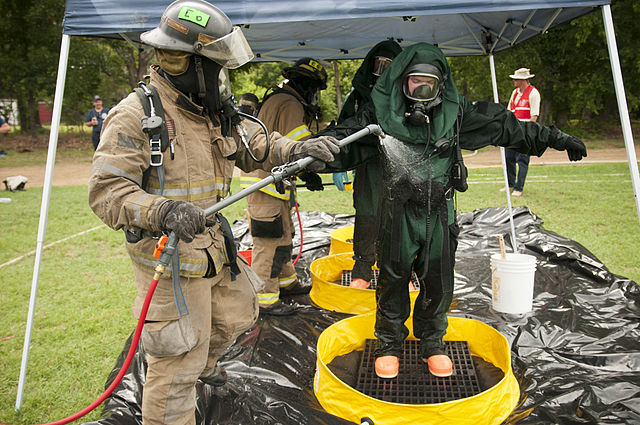Dear Dr. Zoomie –
I’m a firefighter and we’re starting to prepare for radiological emergencies. What sort of stuff do we need to know? Is there some sort of accepted standard for training or certification? Where can we get trained?
Tough questions – and a lot of ground to cover. So let’s get started with some of the relatively easy parts and work our way from there.

First, there is no standard at the moment for training emergency responders for radiological emergencies, and there are no certification programs at present. There are a number of on-line training programs that can go over some of the basic information, but that will only take you so far – to really be effective you need to have in-person training that includes hands-on work as well as the classroom stuff. As far as where you can receive this training, Nevada Technical Associates put together a training class for the Fire Department of New York – I’ll describe this in a moment – that went over very well.
As far as what you need to know…since there is no standard at the moment I can only describe the curriculum that was put together for FDNY – since they had a huge input into the training, the curriculum not only covers what NTA felt was important, but also what the firefighters felt needed to be covered. As an aside, this training is similar to training that NTA instructors have given to other emergency responders elsewhere in the US.

Any radiation training, no matter who the audience is, has to include radiation fundamentals – what types of radiation are there and what are their properties, how does radiation affect our health, how can we detect it, and so forth. But emergency responders have different information needs than others – a radiation safety officer needs to be able to calculate radioactive decay, for example, but an emergency response isn’t likely to last that long so there’s no need to go through the decay calculations. Similarly, it’s helpful to understand the concepts of time-distance-shielding to reduce radiation dose, but it’s not necessary to go into all the calculations for emergency response efforts. So the “radiation fundamentals” part of the training should concentrate on the basic principles – the practical stuff – but there’s no need to get into the mathematical nitty-gritty.
Another part of the classroom part of the training should involve discussing different types of radiological and nuclear emergencies – what might happen during a dirty bomb attack, what happened at Chernobyl and Fukushima (and what might happen during a US reactor accident), as well as what a responder might see during a small-scale event such as a fire in a hospital’s nuclear pharmacy or during a vehicular accident involving radioactivity. Finally, the different places where radioactivity is used (e.g. industrial radiography) and the types of radioactive sources used in these places can help the responders to understand the risks they might face and how to deal with them. And then, on top of all this, responders should also know which regulations apply to their work and how to comply with them.

OK – so that’s the classroom part, but there’s still a practical side of the training as well. Responders have to understand how to use radiation instruments to perform surveys, how they respond to a variety of radioactive sources, how to screen people with both hand-held instruments and portal monitors, how to decontaminate themselves and others, and so forth. And ideally there should be some sort of practical exercise where the responders tackle a simulated radiological emergency – suiting up, conducting surveys, mapping radiation and contamination levels, and so forth; as well as tackling some of the “managerial” decisions such as assigning stay times, determining what sort of protective gear to wear, and so forth.
All of this came out to about 40 hours of training – the same length of time that’s normally spent in the NTA Radiation Safety Officer class.